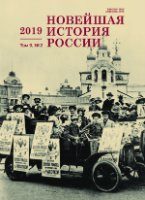Хранители и власти: охрана и реставрация имперской столицы в сталинский период
“Guardians” and Authorities: Protection and Restoration of the Imperial Capital during the Stalin Period
Author(s): O. Yu. Malinova-TziafetaSubject(s): Museology & Heritage Studies, Architecture, Preservation, Military history, Political history, Interwar Period (1920 - 1939), WW II and following years (1940 - 1949), Post-War period (1950 - 1989), History of Communism, Fascism, Nazism and WW II, Book-Review
Published by: Издательство Исторического факультета СПбГУ
Keywords: monument protection; restoration; architectural heritage; St. Petersburg Leningrad; Russian Empire; USSR; blockade of Leningrad; Great Patriotic War; reconstruction;
Summary/Abstract: The article analyzes the book Saving Stalin’s Imperial City: preservation Restoration in Leningrad, 1930–1950 by S. M. Maddox. The — Bloomington: Indiana University Press, 2014. — XII, 284 p. Since the 1930s the architectural heritage of the former capital of the Russian Empire was actively used for ideological and mobilization purposes: — to fight fascism, to rebuild the city after the blockade, and to create the memory of the Great Patriotic War and the Blockade. The case of preserving monuments as such was first delivered only in Stalin’s time. Before the Revolution, the state did not invest in restoration, and there was no legal framework obliging owners to do so. The work of city defenders on the evacuation and preservation of historical monuments during the war is also discussed; post-war cooperation of authorities and “guardians” in the restoration of Leningrad; mobilization of the population by using the idea of complete restoration of the pre-war urban landscape; the possible fate of the monuments of Leningrad in the case of the capture of the city by the fascist troops; the establishment of official memory of the Blockade, captured in the urban landscape (monuments, memorial plaques, etc.) and the so-called “Leningrad text”; and finally, the disintegration of the alliance between creating a memory of the Blockade and the restoration of old imperial Petersburg as a result of tightening political course in the late 1940s and the start of the cold war.
Journal: Новейшая история России
- Issue Year: 9/2019
- Issue No: 27
- Page Range: 526-535
- Page Count: 10
- Language: Russian

